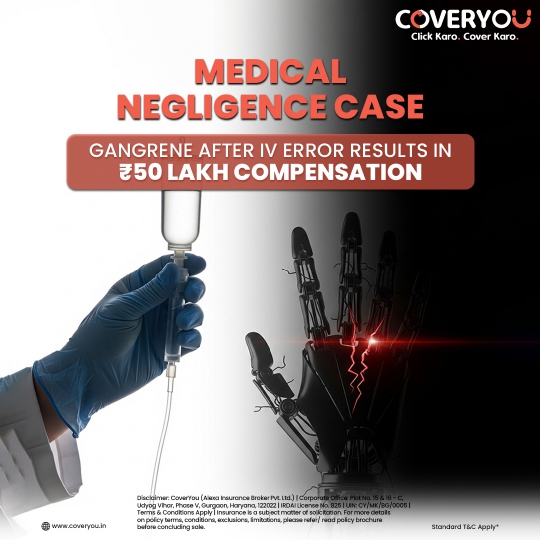Navigating the journey to professional success as a doctor can be both rewarding and challenging. This guide provides comprehensive strategies to help you achieve your career goals and maintain a balanced life.
1. Pursue Excellence in Education and Training
- Staying Ahead with Continuing Education
Continuing education is crucial for doctors to stay current with medical advancements. According to the American Medical Association, 90% of doctors participate in continuing medical education (CME) to enhance their skills and knowledge.
- Specialization and Subspecialization
Specializing in a particular field can significantly impact your career. Approximately 65% of U.S. physicians are specialists, while in India Each year, around 50,000 MBBS doctors are produced, with the majority of 30,000 opting to pursue speciality or super-speciality courses which include Surgeons, cardiologists, and psychiatrists.
2. Maintain Better Communication with Patients
- Importance of Doctor-Patient Communication
Effective communication with patients can improve treatment outcomes and patient satisfaction. The primary goal of communication between doctors and patients is to enhance the patient’s health and the quality of medical care they receive. However, research on this topic has revealed that patients often feel dissatisfied with the communication, even when doctors believe it to be sufficient or excellent. Physicians frequently need to improve their communication skills. For instance, a study by Tongue et al. found that 75% of orthopaedic surgeons thought they communicated well with their patients, but only 21% of the patients agreed. Surveys of patients consistently indicate a desire for improved communication with their doctors.
- Collaborative Communication with Colleagues
Strong communication skills are also essential for collaborating with colleagues. Teams with high levels of communication have been shown to improve patient outcomes by 15%.
3. Embrace Technology in Medicine
- Adoption of Electronic Health Records (EHRs)
Over the years, different measures have been used to assess the adoption of Electronic Health Records (EHRs). Between 2008 and 2013, the term “basic EHR” was employed for this purpose, while from 2014 onwards, “certified EHR” became the standard measure.
In 2016, the NEHRS survey, a significant data source, was not conducted, leading to estimates being carried over from the previous year, 2015.
A notable shift occurred in 2019 when a considerable proportion of physicians (15%) responded with “Don’t Know” regarding their EHR usage. This raised concerns that the reported adoption rate of 72% might be an underestimate, as many of these physicians likely had certified EHR technology in place.
By 2021, the NEHRS survey results for office-based physicians displayed a more consistent trend, aligning closely with data collected from 2015 to 2018. It’s believed that the high number of “Don’t know” responses in 2019 may have underestimated the true rates of EHR adoption for that year.
- Remote Patient Monitoring
The use of remote monitoring has surged, especially during the COVID-19 pandemic. According to a McKinsey report, telehealth usage has stabilized at levels 38 times higher than before the pandemic.
4. Prioritize Work-Life Balance
- Managing Burnout
Burnout is a significant issue among physicians, with 47% reporting it in a 2022 Medscape survey. Strategies like time management, mindfulness, and regular physical activity can help mitigate burnout. Studies show burnout negatively impacts care quality and increases malpractice risk. Burnout independently predicts major medical errors and malpractice suits, with a bidirectional relationship between burnout and errors. Higher burnout levels increase the likelihood of errors, and self-perceived errors worsen burnout, depressive symptoms, and quality of life, creating a cyclical connection.
- Flexible Work Arrangements
Flexible work arrangements, such as part-time schedules and telecommuting, can help maintain a healthy work-life balance. A survey by the American College of Physicians found that 54% of doctors who used flexible work arrangements reported higher job satisfaction.
5. Network and Build Professional Relationships
- Importance of Networking
Networking can open doors to new opportunities and professional growth. The American Medical Association emphasizes that building a strong professional network can lead to collaborative research, mentorship, and career advancement.
- Joining Professional Organizations/ Associations
Joining professional organizations, such as the Indian Medical Association or specialty-specific societies, can provide valuable resources, continuing education opportunities, and a sense of community. These organizations often offer conferences, workshops, and networking events.
6. Professional Indemnity Insurance Plan
- Financial Protection :
Professional Indemnity Insurance is a vital safeguard for Healthcare professionals, offering protection against claims of negligence, errors, or omissions in their work. It serves as a safety net, covering legal expenses and compensation payments that may arise from lawsuits or disputes initiated by clients dissatisfied with the provided services.
- Safeguard Against Reputation Damage:
This insurance not only shields professionals from financial liabilities but also helps maintain their reputation and credibility in the industry. With Professional Indemnity Insurance in place, professionals can navigate their roles with confidence, knowing they have reliable support in managing potential risks and legal challenges.
CoverYou provides critical support to doctors by offering comprehensive insurance Plans including Professional Indemnity. Tailored to the unique needs of healthcare professionals. CoverYou ensures that doctors have robust coverage. This enables them to focus on delivering quality care to their patients without the added stress of potential legal and financial repercussions, thereby fostering a more secure and supportive healthcare environment.
7. Focus on Financial Planning
- Managing Student Debt
The “2020 Medical Professionals: Financial Planning Priorities Study” surveyed 43 Northwestern Mutual financial advisers who specialize in assisting physicians and dentists with their wealth management and risk mitigation strategies. The survey, conducted online in March, provided valuable insights into the financial concerns of these professionals.
The data revealed that retirement planning is the foremost worry for 67% of the advisers’ clients. However, this long-term objective competes with more immediate financial priorities. Personal risk management, including life and disability insurance, ranked high, with 63% of respondents highlighting its importance. Additionally, half of the advisers noted debt reduction as a significant concern, while 40% emphasised the importance of tax management.
- Investing for the Future
Physicians grapple with a significant financial challenge: balancing the repayment of student loan debt with the pursuit of long-term objectives like retirement planning. Over half of financial advisers identify managing debt as a critical factor impacting their clients’ journey toward financial goals.
8. Commit to Personal Growth and Well-being
- Continuous Personal Development
Personal growth is as important as professional development. Engaging in activities outside of medicine, such as hobbies, volunteer work, or pursuing further education in non-medical fields, can enhance personal fulfilment and reduce stress.
- Mental and Physical Health
Maintaining mental and physical health is crucial. The American Psychological Association highlights that regular exercise, healthy eating, adequate sleep, and mindfulness practices can significantly improve overall well-being.
Medical errors can occur in various healthcare settings and involve medications, surgeries, and diagnoses. Patients play a vital role in prevention by informing providers about their medications and allergies, ensuring clarity in prescriptions, and asking about treatment plans and side effects. Advocating for safety, such as confirming handwashing practices in hospitals and understanding discharge instructions, is crucial. Patients should also confirm surgical details, involve trusted family members in appointments, and be cautious about unnecessary tests. These proactive steps help enhance the safety and quality of healthcare.
Conclusion
Securing professional success as a doctor involves a multifaceted approach, from continuous education and effective communication to embracing technology and prioritizing well-being.
Source :
https://www.aamc.org/news/press-releases/us-medical-school-enrollment-surpasses-expansion-goal
















